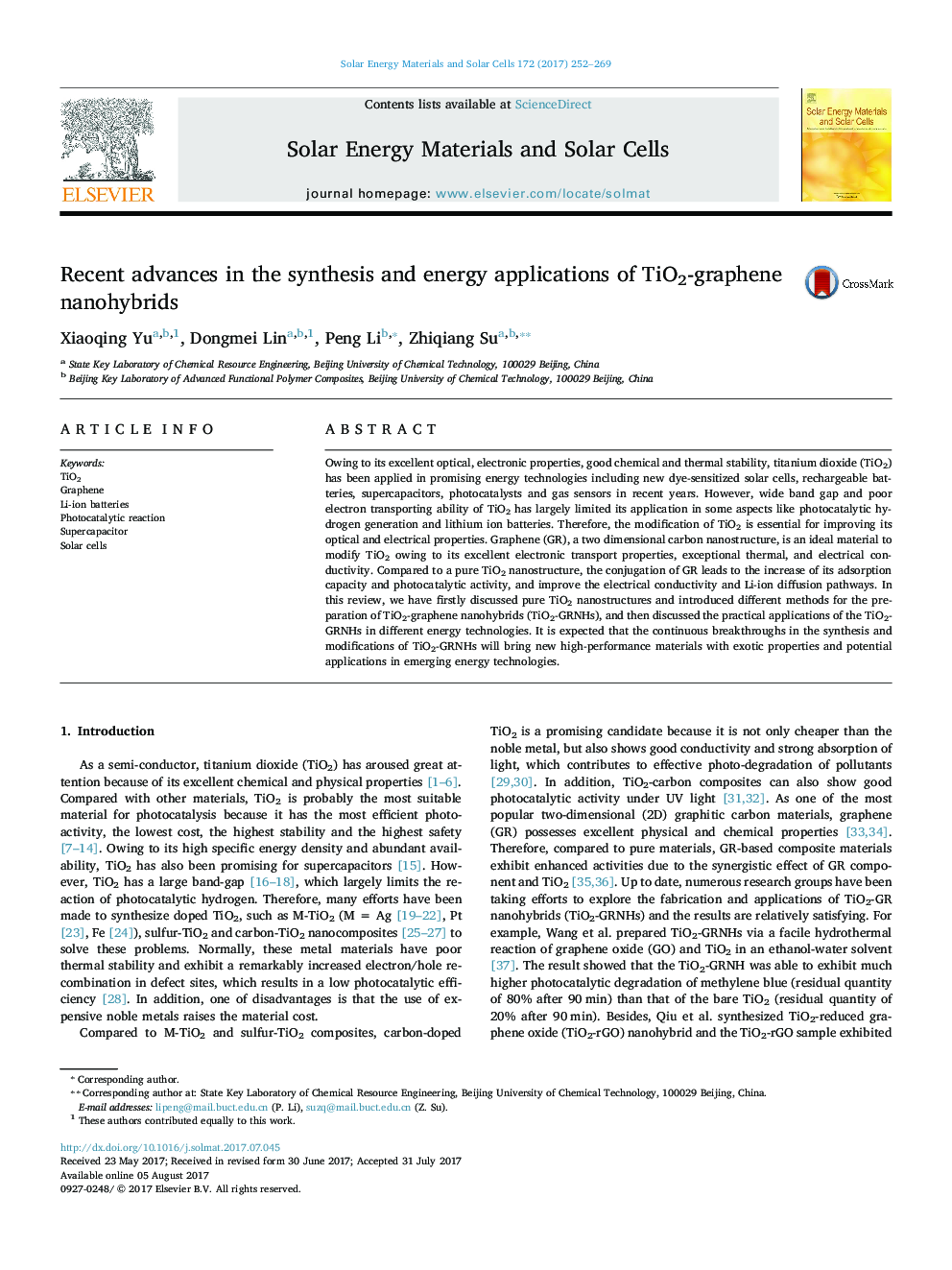| Article ID | Journal | Published Year | Pages | File Type |
|---|---|---|---|---|
| 6456936 | Solar Energy Materials and Solar Cells | 2017 | 18 Pages |
â¢The performance and nanostructures of pure TiO2 were discussed.â¢Different methods for preparing TiO2-graphene nanohybrids were compared.â¢Some energy applications based on TiO2-graphene nanohybrids were summarized.
Owing to its excellent optical, electronic properties, good chemical and thermal stability, titanium dioxide (TiO2) has been applied in promising energy technologies including new dye-sensitized solar cells, rechargeable batteries, supercapacitors, photocatalysts and gas sensors in recent years. However, wide band gap and poor electron transporting ability of TiO2 has largely limited its application in some aspects like photocatalytic hydrogen generation and lithium ion batteries. Therefore, the modification of TiO2 is essential for improving its optical and electrical properties. Graphene (GR), a two dimensional carbon nanostructure, is an ideal material to modify TiO2 owing to its excellent electronic transport properties, exceptional thermal, and electrical conductivity. Compared to a pure TiO2 nanostructure, the conjugation of GR leads to the increase of its adsorption capacity and photocatalytic activity, and improve the electrical conductivity and Li-ion diffusion pathways. In this review, we have firstly discussed pure TiO2 nanostructures and introduced different methods for the preparation of TiO2-graphene nanohybrids (TiO2-GRNHs), and then discussed the practical applications of the TiO2-GRNHs in different energy technologies. It is expected that the continuous breakthroughs in the synthesis and modifications of TiO2-GRNHs will bring new high-performance materials with exotic properties and potential applications in emerging energy technologies.
Graphical abstractDownload high-res image (254KB)Download full-size image
